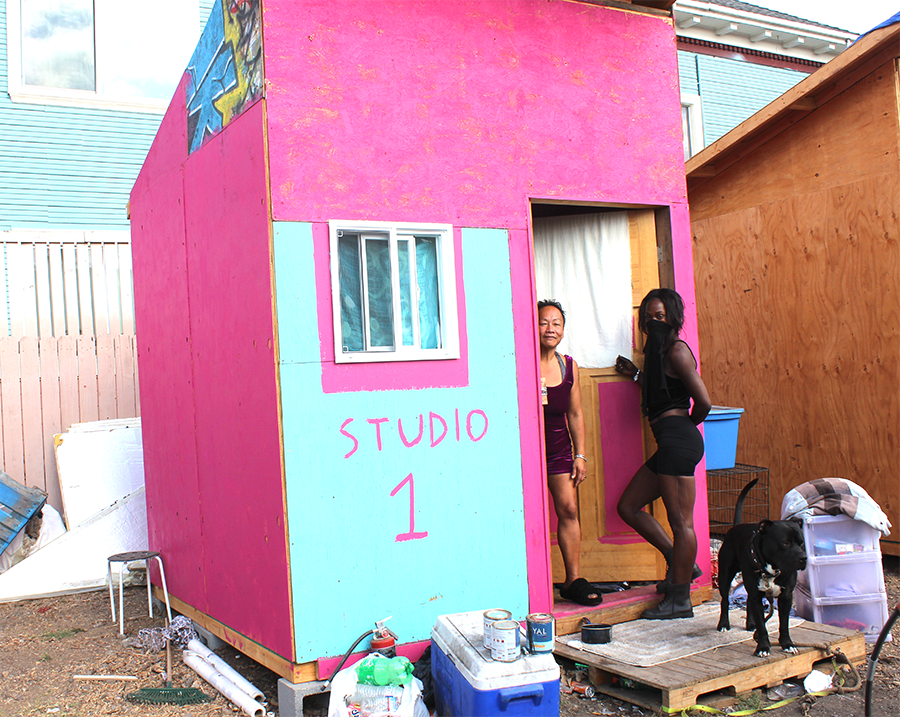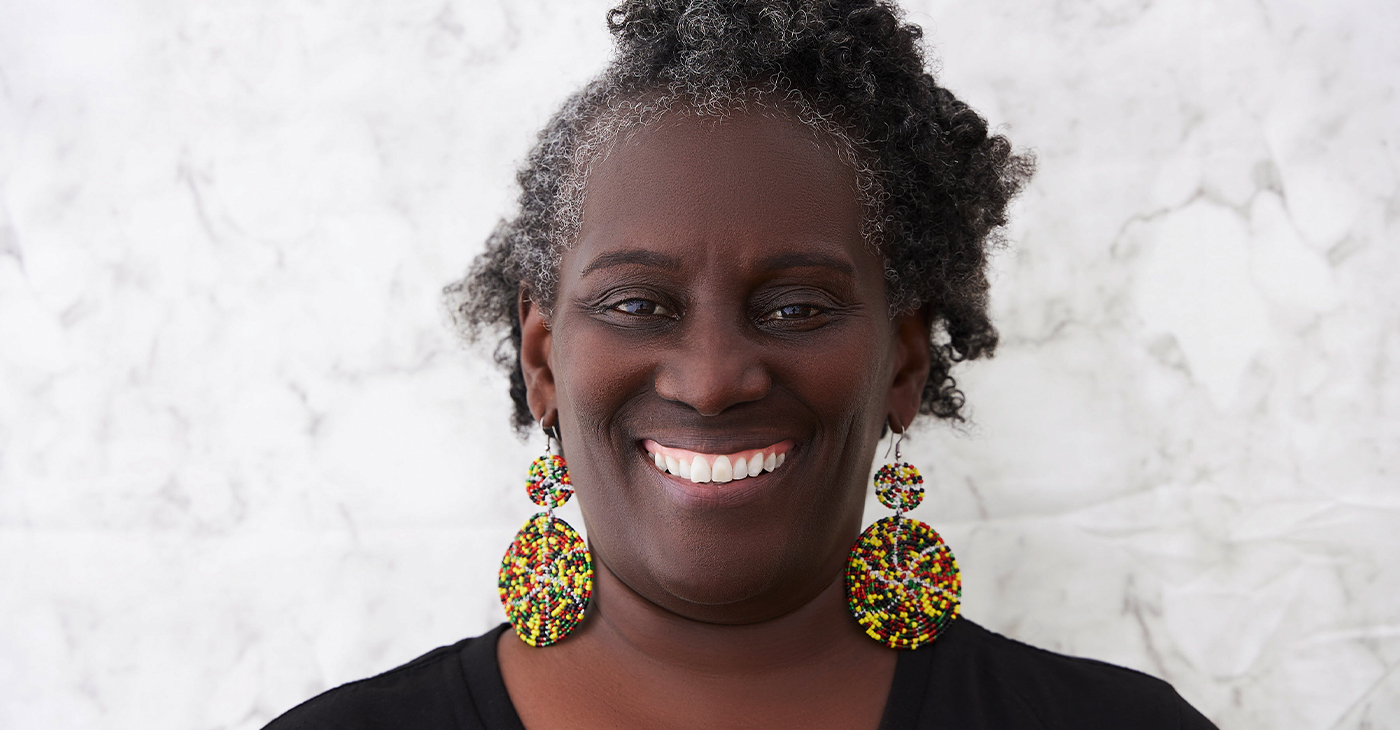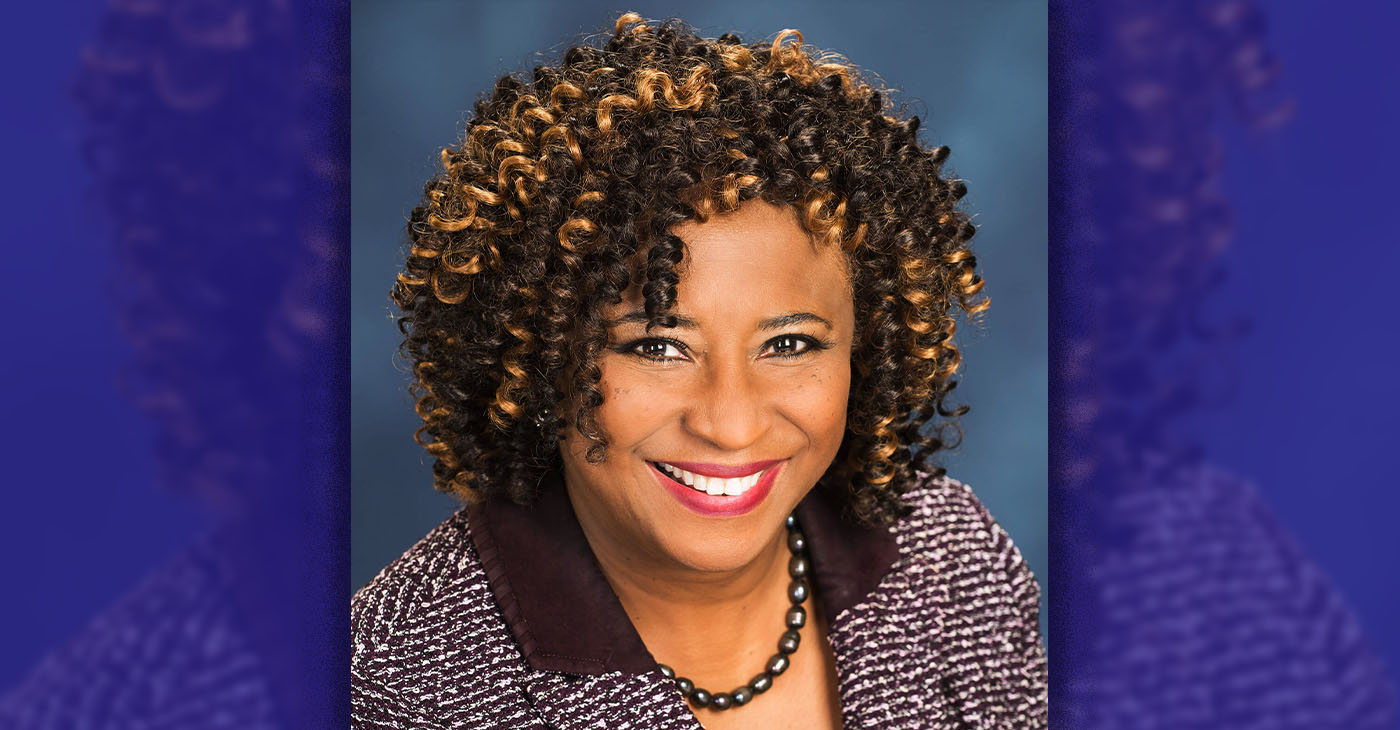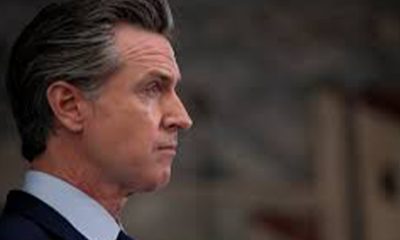Uncategorized
Shelter Options Remain Unclear as City Passes New Homeless Policy

Late on Oct. 20, Oakland City Council unanimously passed an Encampment Management Policy that codifies where people experiencing homelessness are and are not allowed to live, but firm plans for what shelter options people will be offered if cleared from a prohibited area have not been set.
The policy defines any space within 50 feet of a residence, business, protected waterway, public park, or sports court, and within 100 feet of a school as a “high sensitivity area” and further states that “encampments located within a high sensitivity area that are not approved by City Council will be subject to closure intervention.”
“This means they’re going to evict encampments across the entire city,” said Talya Husbands-Hankin of the Oakland homeless rights advocacy group Love and Justice in The Streets. Calling the policy “cruel and racist,” Husbands-Hankin echoed concerns of public speakers at the Oct. 20 City Council meeting, where over 175 speakers spoke, the vast majority of whom spoke critically of the EMP.
Well over 100 other people took their concerns to the streets during the meeting, as protestors, many of whom were associated with The United Front Against Displacement, House The Bay, and TANC Bay Area, hosted anti-EMP noise demonstrations outside of City Hall and Councilmembers Noel Gallo and Dan Kalb homes.
crowd of about dozen and counting are outside council member Dan Kalb’s home. they’re gearing up for a noise demo to protest Oakland’s proposed Encampment Management Policy. pic.twitter.com/zNCDHkijsI
— Zack Haber (@ZZZZZZZZZZZack) October 21, 2020
Those critical of the EMP said that the policy leaves homeless people with no safe place to go as high sensitive areas encompass most of the city. But Daryel Dunston, Oakland’s Homelessness Administrator who presented the policy to City Council, said that the policy “leads with services, compassion and empathy,” and that services and offers of alternative shelter would be given before a clearance. He repeatedly claimed that the policy does not seek to criminalize homelessness and that no one would be arrested just for sleeping outside.
At the meeting, Dunston referred to a recent operation at Pine and 11th streets in West Oakland as an example of the City’s process of providing alternative shelter before clearing an encampment. But Needa Bee, of The Village, a homeless advocacy group, said an elderly homeless Black resident got displaced during this operation. (Since The Post was unable to communicate with him, we are using a pseudonym for him here.)
“They threw away [Michael Simpson’s] belongings and then offered him a few nights in The Travel Inn,” said Bee.
According to a contract between Simpson and Operation Dignity, a non-profit that the City of Oakland works with that helps to connect homeless people with shelter services, Simpson was offered four days of hotel shelter but then would have to pay to remain in the room. It shows he was also offered space in the City’s Community Cabins program, but Bee said he refused due to negative experiences living in them in the past.
Sara Bedford, of the City of Oakland’s Human Services, disputed Bee’s claim in an e-mail sent on Oct. 26.
“We cannot share any specific information but can confirm the individual is no longer unsheltered,” she wrote.
City programs to shelter homeless people in Oakland are limited. Homeless shelters are usually full and some do not offer extended stays. Oakland Community Housing Services Manager Lara Tannenbaum said in an e-mail that the city has 218 community cabin beds, 108 safe RV spaces, and 128 trailer beds. Oakland’s point-in-time count claims there are 4,000 homeless people in Oakland and the Homeless Advocacy Working Group’s count claims around 10,000 people.
In a newsletter sent on Oct. 23 where he referred to the City Administration who would enforce the EMP, Councilmember Kalb wrote, “They have assured us that no encampment would be fully closed, or individuals asked to move without multiple offers of services and shelter, due process and proper noticing.”
There is not yet an agreed-upon definition between the City Administration and the Council defining what shelter would be offered. In her own newsletter, also sent on Oct. 23, City Council President Rebecca Kaplan wrote, “there is a need to ensure a shared understanding of what is required in terms of the provision of adequate shelter.” Then she wrote that the issue would be addressed in a meeting on Dec. 1.
“What really disturbs me and makes me upset is that Oakland, unlike San Francisco, has the amazing resource of 50 plus acres of vacant public land,” said Margaretta Lin, executive director of Just Cities, a non-profit that works towards racial justice, housing for all, and police transformation in Oakland.
She was critical of the EMP as there currently are no long-term spaces that have been made available for most of Oakland’s homeless people to live in if they are cleared from their current locations.
Lin wants to use the vacant land for mobile homes, trailers and tiny homes that would provide shelter for three to five years, claiming that if this were a natural disaster, like an earthquake that affected middle- to high-income residents, public land would already be used for such purposes.
She also pointed to recent funds from taxes like Measures W and Q, that could be used to arrange and construct such shelters.
Just Cities has arranged an 11-page document listing vacant public lands and Lin said they briefed Mayor Libby Schaaf about their plan two years ago.
“Her response was this is a great plan and we’re doing it,” said Lin. “But I don’t think they’re really doing it.”
Neither Schaaf or her media team have responded to questions about whether or how she is currently implementing the Just Cities plan.
In the meantime, some Oakland residents are building tiny homes of their own. 37MLK, a community of long-term homeless residents in the Bay Area who live on private land that has long been left vacant, have started moving into tiny homes that are built and funded by volunteer community members.
While several units are already built and lived in, volunteers are ramping up efforts and plan to have seven units built by Nov. 7. The 8-by-8 foot and 8-by-10 foot units have locking doors and solar lights. By the winter, they hope to install insulation. They are funding the project through Instagram.
“I think that the city should let us have unused property or land that’s just going to waste,” said Rome, a 53-year-old Bay Area native who has been homeless for nine years, and currently lives in a tiny home at 37MLK. The community sits in a high sensitivity area.
Rome talked of how having a roof over her head has made it possible for her to reduce the risk of infection, which may allow her to get a long-needed hip replacement surgery if she can be assured of stability. A bad hip leaves her in constant pain that fluctuates in intensity and limits her ability to move.
Stefani Echeverría-Fenn, who helped found the 37MLK community and has lived in Oakland since 2010, thinks what is happening at 37MLK could happen on a much larger and more effective scale if the city made use of public lands and funding.
“I think all of us are a set of broke millennials with no real money ourselves and no construction skills until we were trained,” she said. “Imagine what we could do with real resources on public land.”
Alameda County
Oakland Acquisition Company’s Acquisition of County’s Interest in Coliseum Property on the Verge of Completion
The Board of Supervisors is committed to closing the deal expeditiously, and County staff have worked tirelessly to move the deal forward on mutually agreeable terms. The parties are down to the final details and, with the cooperation of OAC and Coliseum Way Partners, LLC, the Board will take a public vote at an upcoming meeting to seal this transaction.

Special to The Post
The County of Alameda announced this week that a deal allowing the Oakland Acquisition Company, LLC, (“OAC”) to acquire the County’s 50% undivided interest in the Oakland- Alameda County Coliseum complex is in the final stages of completion.
The Board of Supervisors is committed to closing the deal expeditiously, and County staff have worked tirelessly to move the deal forward on mutually agreeable terms. The parties are down to the final details and, with the cooperation of OAC and Coliseum Way Partners, LLC, the Board will take a public vote at an upcoming meeting to seal this transaction.
Oakland has already finalized a purchase and sale agreement with OAC for its interest in the property. OAC’s acquisition of the County’s property interest will achieve two longstanding goals of the County:
- The Oakland-Alameda Coliseum complex will finally be under the control of a sole owner with capacity to make unilateral decisions regarding the property; and
- The County will be out of the sports and entertainment business, free to focus and rededicate resources to its core safety net
In an October 2024 press release from the City of Oakland, the former Oakland mayor described the sale of its 50% interest in the property as an “historic achievement” stating that the transaction will “continue to pay dividends for generations to come.”
The Board of Supervisors is pleased to facilitate single-entity ownership of this property uniquely centered in a corridor of East Oakland that has amazing potential.
“The County is committed to bringing its negotiations with OAC to a close,” said Board President David Haubert.
Arts and Culture
Rise East Project: Part 3
Between 1990 and 2020, Oakland lost nearly half of its Black population due to economic and social forces. East Oakland, once a middle-class community, is now home to mostly Black families living in poverty.

The Black Cultural Zone’s Pivotal Role in Rebuilding Oakland’s Black Community
By Tanya Dennis
Between 1990 and 2020, Oakland lost nearly half of its Black population due to economic and social forces. East Oakland, once a middle-class community, is now home to mostly Black families living in poverty.
In 2021, 314 Oakland residents died from COVID-19. More than 100 of them, or about 33.8%, were Black, a high rate of death as Blacks constitute only 22.8% of Oakland’s population.
This troubling fact did not go unnoticed by City and County agencies, and the public-at-large, ultimately leading to the development of several community organizations determined to combat what many deemed an existential threat to Oakland’s African American residents.
Eastside Arts Alliance had already proposed that a Black Cultural Zone be established in Deep East Oakland in 2010, but 2020’s COVID-19 pandemic galvanized the community.
Demanding Black legacy preservation, the Black Cultural Zone (BCZ) called for East Oakland to be made an “unapologetically Black” business, commercial, economic development community.
Established initially as a welcoming space for Black art and culture, BCZ emerged into a a community development collective, and acquired the Eastmont police substation in Eastmont Town Center from the City of Oakland in 2020.
Once there, BCZ immediately began combating the COVID-19 pandemic with drive-thru PPE distribution and food giveaways. BCZ’s Akoma Market program allowed businesses to sell their products and wares safely in a COVID-compliant space during the COVID-19 shutdown.
Currently, Akoma Market is operated twice a month at 73rd and Foothill Boulevard and Akoma vendors ‘pop up’ throughout the state at festivals and community-centered events like health fairs.
“Before BCZ existed, East Oakland was a very depressing place to live,” said Ari Curry, BCZ’s chief experience officer and a resident of East Oakland. “There was a sense of hopelessness and not being seen. BCZ allows us to be seen by bringing in the best of our culture and positive change into some of our most depressed areas.”
The culture zone innovates, incubates, informs, and elevates the Black community and centers it in arts and culture, Curry went on.
“With the mission to center ourselves unapologetically in arts, culture, and economics, BCZ allows us to design, resource, and build on collective power within our community for transformation,” Curry concluded.
As a part of Oakland Thrives, another community collective, BCZ began working to secure $100 million to develop a ‘40 by 40’ block area that runs from Seminary Avenue to the Oakland-San Leandro border and from MacArthur Boulevard to the Bay.
The project would come to be known as Rise East.
Carolyn Johnson, CEO of BCZ says, “Our mission is to build a vibrant legacy where we thrive economically, anchored in Black art and commerce. The power to do this is being realized with the Rise East Project.
“With collective power, we are pushing for good health and self-determination, which is true freedom,” Johnson says. “BCZ’s purpose is to innovate, to change something already established; to incubate, optimizing growth and development, and boost businesses’ economic growth with our programs; we inform as we serve as a trusted source of information for resources to help people; and most important, we elevate, promoting and boosting Black folks up higher with the services we deliver with excellence.
“Rise East powers our work in economics, Black health, education, and power building. Rise East is the way to get people to focus on what BCZ has been doing. The funding for the 40 by 40 Rise East project is funding the Black Culture Zone,” Johnson said.
Alameda County
Help Protect D.A. Pamela Price’s Victory
Alameda County District Attorney Pamela Price is asking supporters of the justice reform agenda that led her to victory last November to come to a Town Hall on public safety at Montclair Presbyterian Church on July 27.

By Post Staff
Alameda County District Attorney Pamela Price is asking supporters of the justice reform agenda that led her to victory last November to come to a Town Hall on public safety at Montclair Presbyterian Church on July 27.
Price is facing a possible recall election just six months into her term by civic and business interests, some of whom will be at the in-person meeting from 6:00-9:00 p.m. at 5701 Thornhill Dr. in Oakland.
“We know that opponents of criminal justice reform plan to attend this meeting and use it as a forum against the policies that Alameda County voters mandated DA Price to deliver. We cannot let them succeed,” her campaign team’s email appeal said.
“That’s why I’m asking you to join us at the town hall,” the email continued. “We need to show up in force and make sure that our voices are heard.”
Price’s campaign is also seeking donations to fight the effort to have her recalled.
Her history-making election as the first African American woman to hold the office had been a surprise to insiders who had expected that Terry Wiley, who served as assistant district attorney under outgoing D.A. Nancy O’Malley, would win.
Price campaigned as a progressive, making it clear to voters that she wanted to curb both pretrial detention and life-without-parole sentences among other things. She won, taking 53% of the vote.
Almost immediately, Price was challenged by some media outlets as well as business and civic groups who alleged, as she began to fulfill those campaign promises, that she was soft on crime.
On July 11, the recall committee called Save Alameda for Everyone (S.A.F.E.) filed paperwork with the county elections office to begin raising money for the next step toward Price’s ouster: gathering signatures of at least 10% of the electorate.
S.A.F.E. has its work cut out for them, but Price needs to be prepared to fight them to keep her office.
In a separate sponsored letter to voters, Price supporters wrote:
“We know that you supported DA Price because you believe in her vision for a more just and equitable Alameda County. We hope you share our belief that our criminal justice system has to be fair to everyone, regardless of their race, gender, ethnicity, religion, or socioeconomic status.
“The Republican-endorsed effort is a blatant attempt to overturn the will of the voters and a waste of time and money. It is an attempt to silence the voices of those who want real justice. We cannot let these election deniers succeed.
“Will you make a donation today to help us protect the win?
“Please watch this video and share it with your friends and family. We need to stand up to the sore losers and protect the win. Together, we can continue to make Alameda County a more just, safe and equitable place for everyone.”
For more information, go to the website: pamelaprice4da.com
or send an e-mail to info@pamelaprice4da.com
-

 Activism3 weeks ago
Activism3 weeks agoWe Fought on Opposite Sides of the Sheng Thao Recall. Here’s Why We’re Uniting Behind Barbara Lee for Oakland Mayor
-

 Activism4 weeks ago
Activism4 weeks agoSan Francisco Is Investing Millions to Address Food Insecurity. Is Oakland Doing the Same?
-

 #NNPA BlackPress3 weeks ago
#NNPA BlackPress3 weeks agoRev. Dr. Jamal Bryant’s Black Church Target Boycott Mobilizes 150,000
-

 Activism3 weeks ago
Activism3 weeks agoFaith Leaders Back Barbara Lee for Mayor, Criticize Candidate Loren Taylor for Dishonest Campaigning
-

 Activism4 weeks ago
Activism4 weeks agoOakland Post: Week of March 12 – 18, 2025
-

 #NNPA BlackPress3 weeks ago
#NNPA BlackPress3 weeks agoRecently Approved Budget Plan Favors Wealthy, Slashes Aid to Low-Income Americans
-

 Activism3 weeks ago
Activism3 weeks agoGroup Takes First Steps to Recall District Attorney Diana Becton
-

 Activism2 weeks ago
Activism2 weeks agoOakland’s Most Vulnerable Neighborhoods Are Struggling to Eat and Stay Healthy



























































